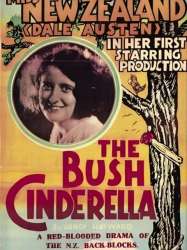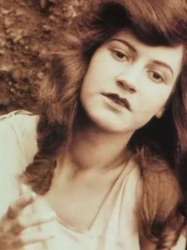Rudall Hayward est un Réalisateur, Scénariste, Producteur et Monteur Britannique né le 4 juillet 1900 à Wolverhampton (Royaume-uni)

Rudall Charles Victor Hayward (4 July 1900 – 29 May 1974) was a pioneer New Zealand filmmaker from the 1920s to the 1970s, who directed seven feature films and numerous others. He was born in Wolverhampton, England, and died in Dunedin while promoting his last film.
He was the son of Rudall and Adelina Heyward, who came to New Zealand in 1905. With Henry John Hayward (1866–1945) Rudall senior’s brother, his parents were involved with entertainment and silent cinema in New Zealand, in West’s Pictures and The Brescians.
Rudall (junior) was educated at Wanganui Collegiate School and the Waihi School of Mines. He worked in Australia c1920 under Raymond Longford (who in 1915-16 was filming in New Zealand), on some of Longford's films: "The Sentimental Bloke", "On Our Selection", and "Rudd’s New Selection".
He made his first two-reel comedy The Man from Freeman’s Bay in 1920 (which his uncle Henry offered him £50 to burn!). He was prosecuted by the Auckland City Council in the Police Court and fined £1 on each of two charges for putting up posters for The Bloke from Freeman’s Bay in unauthorised places contrary to city by-laws, in October 1921.
His first feature was My Lady of the Cave (1922), then Rewi’s Last Stand (1925), The Te Kooti Trail (1927), and The Bush Cinderella (1928).
In 1928-30 he made 23 two-reel "community comedies" with local settings and actors at various towns, and titles like: Tilly of Te Aroha, Hamilton’s hectic husbands, A Daughter of Dunedin, Winifred of Wanganui, Natalie of Napier, and Patsy of Palmerston. Lee Hill worked with Haywood on these, then went into competition with him.
His first sound film was On the Friendly Road (1936) with Colin Scrimgeour, and he remade Rewi’s Last Stand with sound (1939).
After World War II he worked in England, then made his most successful film “The Amazing Dolphin of Opononi” about Opo the dolphin. He made educational films in New Zealand and overseas, then his final film To Love a Maori (1972), which was shot on 16 mm.
Source : Wikidata
Rudall Hayward

- Infos
- Photos
- Meilleurs films
- Famille
- Personnages
- Récompenses
Nom de naissance Rudall Charles Victor Hayward
Nationalité Royaume-uni
Naissance 4 juillet 1900 à Wolverhampton (Royaume-uni)
Mort 29 mars 1974 (à 73 ans) à Dunedin (Nouvelle zelande)
Récompenses Membre de l'ordre de l'Empire britannique
Nationalité Royaume-uni
Naissance 4 juillet 1900 à Wolverhampton (Royaume-uni)
Mort 29 mars 1974 (à 73 ans) à Dunedin (Nouvelle zelande)
Récompenses Membre de l'ordre de l'Empire britannique
He was the son of Rudall and Adelina Heyward, who came to New Zealand in 1905. With Henry John Hayward (1866–1945) Rudall senior’s brother, his parents were involved with entertainment and silent cinema in New Zealand, in West’s Pictures and The Brescians.
Rudall (junior) was educated at Wanganui Collegiate School and the Waihi School of Mines. He worked in Australia c1920 under Raymond Longford (who in 1915-16 was filming in New Zealand), on some of Longford's films: "The Sentimental Bloke", "On Our Selection", and "Rudd’s New Selection".
He made his first two-reel comedy The Man from Freeman’s Bay in 1920 (which his uncle Henry offered him £50 to burn!). He was prosecuted by the Auckland City Council in the Police Court and fined £1 on each of two charges for putting up posters for The Bloke from Freeman’s Bay in unauthorised places contrary to city by-laws, in October 1921.
His first feature was My Lady of the Cave (1922), then Rewi’s Last Stand (1925), The Te Kooti Trail (1927), and The Bush Cinderella (1928).
In 1928-30 he made 23 two-reel "community comedies" with local settings and actors at various towns, and titles like: Tilly of Te Aroha, Hamilton’s hectic husbands, A Daughter of Dunedin, Winifred of Wanganui, Natalie of Napier, and Patsy of Palmerston. Lee Hill worked with Haywood on these, then went into competition with him.
His first sound film was On the Friendly Road (1936) with Colin Scrimgeour, and he remade Rewi’s Last Stand with sound (1939).
After World War II he worked in England, then made his most successful film “The Amazing Dolphin of Opononi” about Opo the dolphin. He made educational films in New Zealand and overseas, then his final film To Love a Maori (1972), which was shot on 16 mm.
Filmographie de Rudall Hayward (6 films)
Réalisateur

On the Friendly Road (1936)
Réalisé par Rudall Hayward
Genres Drame
Thèmes La mer, Transport
The plot involves Mac McDermitt who is wrongly accused of theft and imprisoned, but is finally vindicated and cleared. The crusading Rev Colin Scrimgeour also starred. Sam Edwards said it has one-dimensional characters so is melodramatic, and "has not improved with age".
Scénariste
Producteur

On the Friendly Road (1936)
Réalisé par Rudall Hayward
Genres Drame
Thèmes La mer, Transport
Rôle Producteur
The plot involves Mac McDermitt who is wrongly accused of theft and imprisoned, but is finally vindicated and cleared. The crusading Rev Colin Scrimgeour also starred. Sam Edwards said it has one-dimensional characters so is melodramatic, and "has not improved with age".
Monteur

On the Friendly Road (1936)
Réalisé par Rudall Hayward
Genres Drame
Thèmes La mer, Transport
The plot involves Mac McDermitt who is wrongly accused of theft and imprisoned, but is finally vindicated and cleared. The crusading Rev Colin Scrimgeour also starred. Sam Edwards said it has one-dimensional characters so is melodramatic, and "has not improved with age".
 Connexion
Connexion



